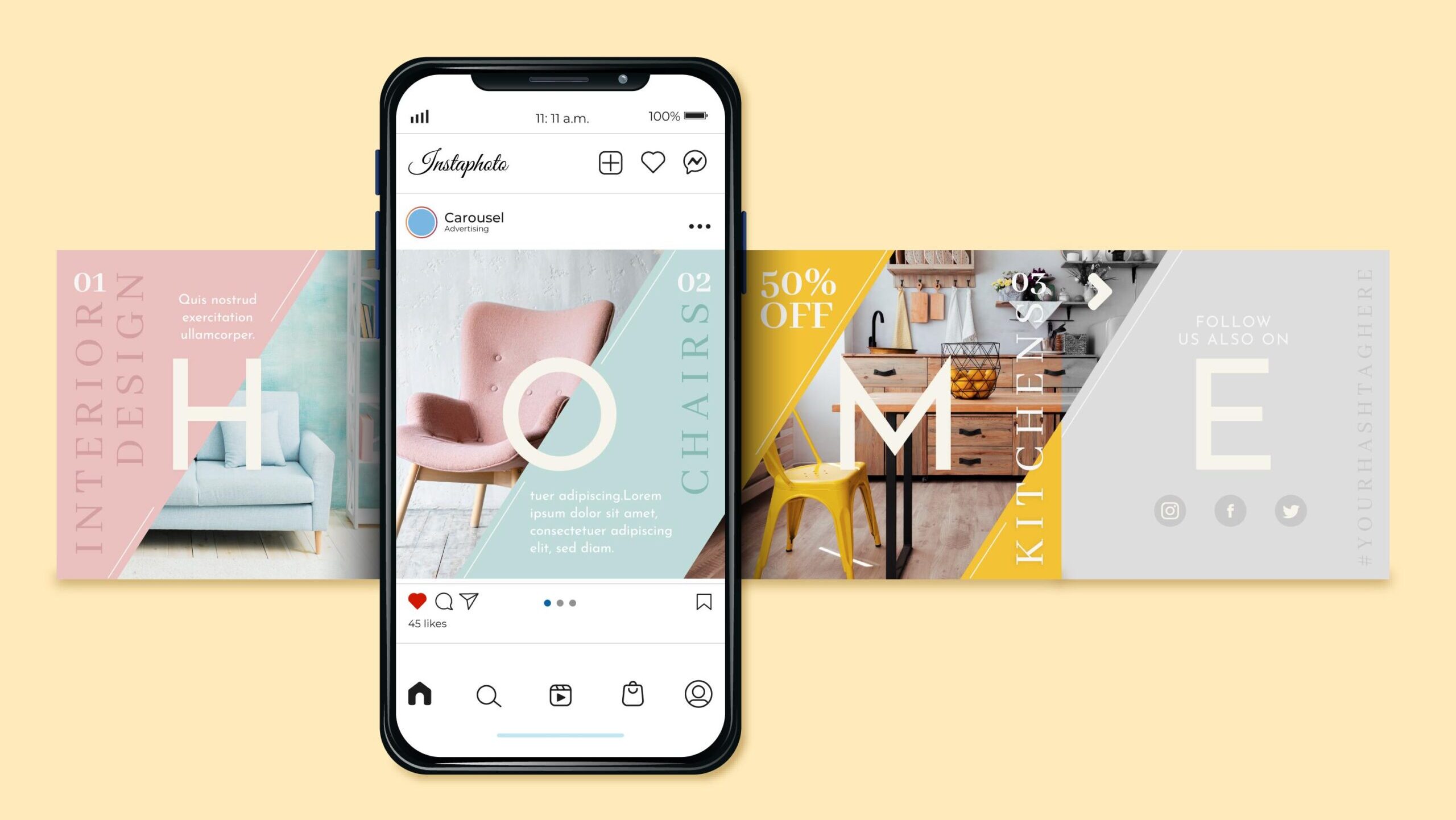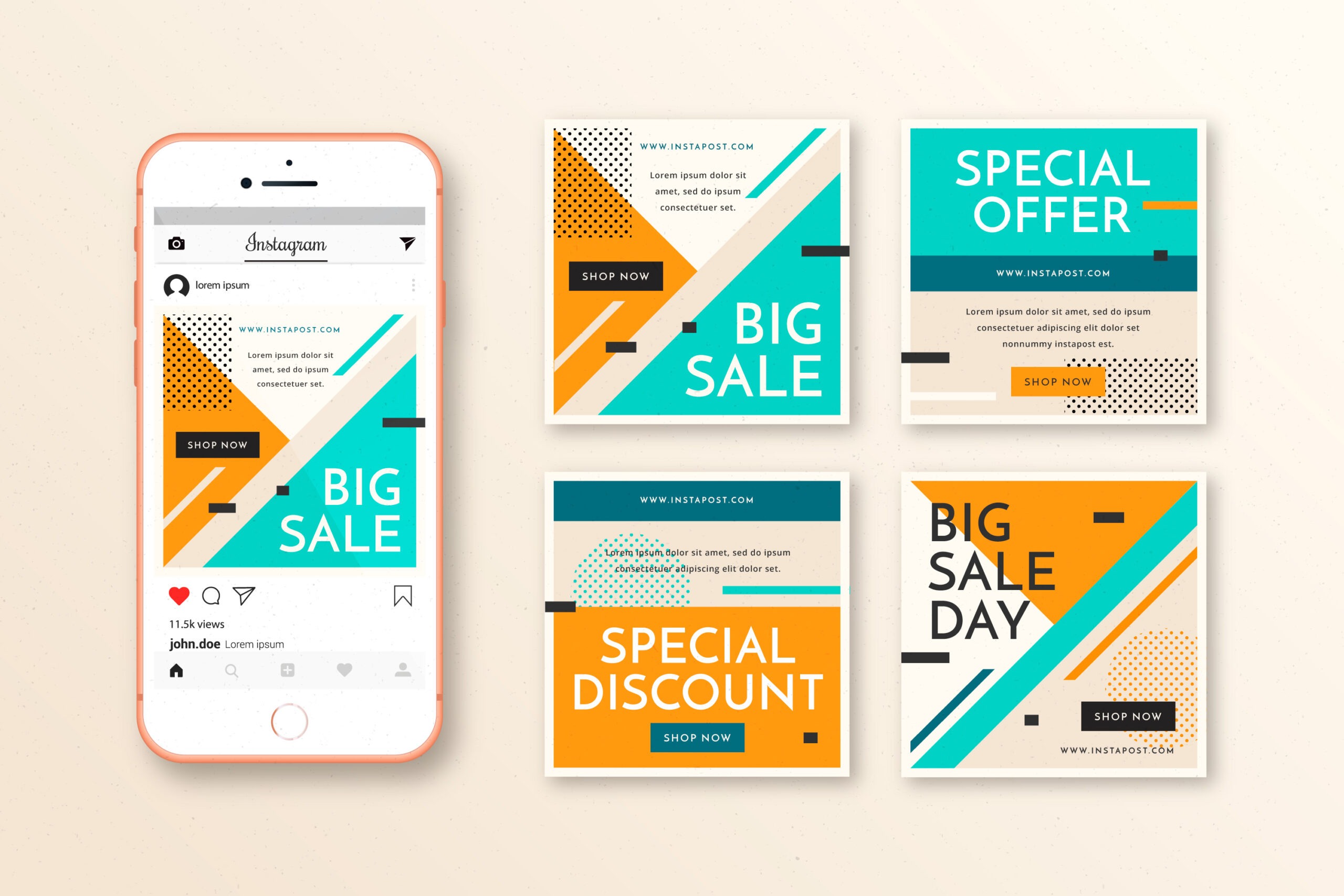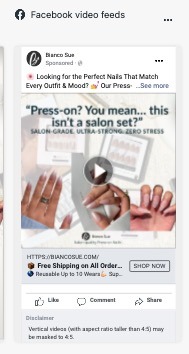
Instagram Ads Cost: Breaking Down Pricing and Optimisation Tips
Instagram Ads Cost: Breaking Down Pricing and Optimisation Tips
Instagram ads remain one of the fastest ways to reach millions of people while keeping your brand top-of-mind. They offer a blend of visual storytelling and direct response capabilities, letting companies both build awareness and drive sales in a single scroll. Yet, for all their power, Instagram ad costs often leave business owners and marketing teams scratching their heads: Why did our CPM jump overnight? How do brands scale cost-effectively while competitors in the same niche pay half as much?
It turns out that the secret to effective Instagram advertising isn’t about spending the most, but about understanding what you’re actually paying for and making sure each dollar works harder for you.
Is Instagram Advertising a Bargain or a Budget Trap?
Plenty of companies have emptied their wallets on social before seeing results, often due to overly broad targeting or letting underwhelming ads run just a bit too long. That’s why a precise, data-driven approach wins out every time.
Let’s frame the landscape with current cost estimates, so you know where your spending sits:
| Pricing Model | Typical Range |
|---|---|
| Cost Per Click (CPC) | $0.20–$2.00 |
| Cost Per 1,000 Impressions (CPM) | $6.00–$10.00 |
| Cost Per Lead (CPL) | $3–$15 |
| Cost Per Acquisition (CPA) | $20–$50 (ecomm; higher for SaaS) |
These are not hard limits, but rather working averages, so campaigns may land above or below—especially when factoring in audience size, creative quality, and real-world buyer intent.
If you’re new to Meta’s advertising ecosystem, check out our beginner’s guide to Meta Ads for a clear overview before you dive into Instagram-specific strategies.

Conversion is Everything
It bears repeating: A $2.00 click is great if it brings revenue. A $0.70 click that never converts is just digital dust. The only numbers that matter are those that tie spend to growth. Judging performance demands constant tracking of cost per result—not just volume.
Let’s look at how different choices directly impact what you’ll pay.
Why Do Instagram Ad Costs Vary So Much?
Every ad campaign sets off a cascade of variables, from the objective you pick to the precise image and call-to-action. What you choose in the Meta Ads Manager shapes every performance metric down the line.
Objective Type
- Conversion or sales campaigns typically use more budget per result, but drive higher-value actions.
- Awareness or engagement objectives generally cost less, serving as a learning ground for new offers or audiences.
- Start broad, then tighten your focus as data comes in.
Audience Warmth
- Cold targeting (new prospects) can get expensive fast, as the platform needs time to “learn” which users respond.
- Warm audiences (previous website visitors, email subscribers, social engagers, or lookalikes) almost always convert more quickly and for less.
- Pivot heavily toward retargeting and lookalike strategies once core creative performs.
Ad Format Selection
- Feed ads: Prime placement for sales, but CPMs and CPCs run higher.

- Stories/Reels: Cheaper reach and impressions, especially good for upper-funnel goals or time-sensitive messaging.

- Carousel: Best for product showcases or feature comparisons.

- Video: High initial engagement—keep the first three seconds visually dynamic.

- Table: Quick Ad Format Guide
| Format | CPM Range | Best Use |
|---|---|---|
| Feed | $6–$12 | Deep product/service pushes |
| Stories | $5–$8 | Fast reach, time-based offers |
| Reels | $4–$7 | Discovery, viral potential |
| Carousel | $7–$13 | Multi-offer, side-by-side |
Blend formats where possible, mirroring strong-performing creative into vertical assets for Stories or Reels.
Ad Quality Lower-quality ads pay a penalty. Meta’s systems reward high engagement — not mere impressions! Bland images, low-res video, or weak hooks get marked down fast. Your relevance score (Meta’s internal rating) quietly determines your real cost per action.
Ad Fatigue Don’t expect big numbers from a static campaign. If your CTR sags below 1%, sound the alarm: Meta interprets audience apathy as a sign to raise your CPM. Rotate fresh creative—ideally every 7–10 days. Even subtle tweaks can reset engagement and keep costs lean.
Placement Strategy: Where You Appear, What You Pay
Meta’s default recommendation is to select as many placements as possible (Advantage+). This automates testing across feeds, stories, reels, and even Facebook. Advantage+ placements drive efficiency—so long as you monitor reports and cull underperformers.
Different placements mean different costs:
- Feed placements: Best for conversions, typically command the highest cost.
- Stories: Great for mass awareness and limited offers, often the cheapest reach.
- Reels: Newer, lowest CPMs, optimised for short-form, attention-grabbing visual content.
- Messenger/Explore: Test intermittently; performance is hit or miss by the industry.
Gather quick placement-level results, then redirect spend to where conversion rates hold up best.
Budget, Bidding, and the Learning Phase
Instagram’s machine learning engine craves data. Campaigns that limp along with tiny budgets (<$5 per day) crawl through the “learning phase,” locking in high spread, unreliable costs. Aim for at least $5/day for 6 days minimum. Scale up only after clear early success.
Testing manual bidding? Recognise the risks. While you can constrain costs with caps, if Meta can’t find enough cheap results within your bid range, delivery will suffer. Let the algorithm work early on; switch to tighter manual bids once your desired CPA is steady.
Industry Benchmarks: How Do You Stack Up?
Here are common benchmarks for Instagram ad performance. Reference them while reviewing your campaigns:
| Metric | Strong | Average | Weak |
|---|---|---|---|
| CTR | 1.5%+ | 0.8%–1.5% | Less than 0.8% |
| CPC | Less than $1.00 | $1–$2 | Above $2.00 |
| CPM | Less than $8.00 | $8–$12 | Above $12.00 |
Watch your click-through rate (CTR) first. Low CTR indicates audience disinterest; fix this before spending more. CPM tells you whether your targeting and quality score are competitive. CPC is a lagging indicator—drive down with better creative and refined audiences.
How the Instagram Ad Auction System Works
Instagram doesn’t simply show ads to the highest bidder. Instead, every time an ad slot becomes available, an automated auction takes place—often in milliseconds—to determine which ad gets shown and at what cost. Understanding this process is crucial for brands aiming to optimise their ad spend and maximise results.
What Determines the Winner?
The Instagram ad auction weighs three main factors:
- Bid Amount This is the maximum amount you’re willing to pay for your desired outcome (click, impression, conversion, etc.). You can set this manually or let Meta’s algorithm optimise it automatically.
- Estimated Action Rate Instagram predicts how likely a user is to take your desired action (like clicking, converting, or engaging) based on past behaviour and your ad’s relevance. Higher estimated action rates mean your ad is more likely to be shown—even if your bid isn’t the highest.
- Ad Quality and Relevance Meta evaluates your ad’s quality using feedback (such as hides or reports), engagement, and how relevant your ad is to the target audience. Poor-quality or irrelevant ads are penalised with higher costs or reduced delivery.
The Auction Formula
Each ad in the auction receives a “total value” score, calculated as:
Total Value = Bid Amount × Estimated Action Rate × Ad Quality
The ad with the highest total value wins the auction and gets shown to the user. This means a highly relevant, engaging ad can beat a higher bid from a less relevant competitor.
Step-by-Step Breakdown
- A user opens Instagram and scrolls.
- Instagram identifies available ad slots.
- All eligible ads for that user enter the auction.
- Each ad is scored based on bid, estimated action rate, and quality.
- The ad with the highest total value is shown.
- You pay just enough to beat the next-best ad—not necessarily your full bid.
Why This Matters
- Optimise for relevance and engagement: High-quality creative and precise targeting can lower your costs, even if your bid is modest.
- Monitor ad feedback: Negative signals (like hides or reports) can quietly drive up your costs.
- Test bidding strategies: Start with automatic bidding, then experiment with manual bids once you have stable performance data.
Advanced Bidding Strategies for Instagram Ads
Once you’ve mastered the basics of Instagram ad bidding, moving beyond automatic bidding can unlock greater control and efficiency—especially as your campaigns scale. Understanding when and how to use advanced bidding strategies can help you maximise results while keeping costs predictable.
Manual vs. Automatic Bidding
Automatic Bidding: Meta’s algorithm automatically sets your bid to get the most results at the lowest possible cost. This is ideal for new campaigns, learning phases, or when you want to prioritise volume and let the system optimise for you.
Manual Bidding: Manual bidding allows you to set a maximum bid for your desired outcome (click, impression, or conversion). This gives you tighter control over costs, but requires more hands-on management and a clear understanding of your target CPA or ROAS.
| Bidding Type | Best For | Pros | Cons |
|---|---|---|---|
| Automatic | Beginners, learning phase, broad reach | Minimal setup, algorithm optimises | Less control, can overspend in niches |
| Manual | Experienced advertisers, scaling | Predictable costs, control | Requires monitoring, risk of underdelivery |
Tips for Setting Bid Caps and Cost Controls
- Start with Automatic: Let Meta optimise while you gather data. Once you see consistent CPA or ROAS, consider testing manual bids.
- Set Realistic Bid Caps: Research your average CPC/CPA and set your cap slightly above to avoid underdelivery.
- Use Cost Controls: Try “Cost Cap” or “Bid Cap” strategies in Meta Ads Manager to balance volume and efficiency.
- Monitor Delivery: If your ads aren’t spending or results drop, your bid cap may be too low. Adjust incrementally and monitor performance.
When to Switch Strategies
- Switch to Manual Bidding:
- When you need to control costs in highly competitive auctions.
- If you have a clear target CPA or ROAS and want to avoid overspending.
- When scaling budgets and seeking more predictable returns.
- Stick with Automatic Bidding:
- During initial testing or when entering new markets/audiences.
- If your campaign is still in the learning phase or lacks sufficient conversion data.
Real-World Scenario
A fashion eCommerce brand starts with automatic bidding to test new creative and audiences. After two weeks, they see a stable CPA of $18 but want to scale without costs creeping up. They switch to manual bidding, setting a bid cap at $20. This keeps acquisition costs predictable, but they monitor closely—if delivery slows, they raise the cap by $1–$2 until performance stabilises.
Reducing Your Instagram Ad Spend Without Cutting Performance
Worried about wasted dollars? Focus squarely on these levers:
Start by Retargeting Begin with custom audiences you’ve built through site visits, email opens, or social engagement. Conversion rates here outpace cold targeting nearly every time.
Obsess Over Creative Performance If initial CTR lags, don’t scale. Test five creative angles (three images, two short videos, varied headlines) before doubling down on a winner.
Ad Rotation Fresh creative matters. Swap imagery or video, headline, or even slight layout shifts every one to two weeks. This maintains relevance and tamps down CPM inflation.
Auto Placements: Optimise, Then Prune Run wide early, refine placement by performance. Kill underperforming formats (e.g., Messenger, Instagram Explore) and double down on your proven performers.
Radical Message Match Send traffic to landing pages that continue the message or offer in your ad. One topic, one call-to-action, minimal distractions. Any break in message momentum kills conversions.
Watch Your Metrics
If you’re seeing rising CAC (customer acquisition cost), step back and review. Sometimes, the best move is to pause Instagram entirely if your industry’s margins or funnel just don’t fit.
Here are signals that you might need a different spend or platform:
- CAC exceeds customer LTV
- B2B/SaaS spends 90% of money on cold, long-cycle leads with little actual engagement
- No bandwidth to test multiple creative or targeting options
Alternatives such as influencer marketing, small-scale sponsored posts, or shifting to channels where buyer intent is explicit may serve you better.
How Instagram Compares to Other Ad Platforms
Budgeting across platforms? Here’s a side-by-side:
| Platform | Avg. CPC | Best Use Case |
|---|---|---|
| $0.20–$2.00 | Visual-first brands, retargeting | |
| $0.30–$1.50 | Broader audiences | |
| TikTok | $0.10–$1.00 | Mass reach, younger demos |
| $1.00–$4.00+ | High intent, direct search | |
| $4.00–$6.00+ | B2B, professional targeting |
Instagram shines as a mid-funnel channel: excellent for product discovery and nurturing via retargeting. Google is better for ready-to-buy moments, LinkedIn for B2B, and TikTok when you need broad, rapid awareness—especially among younger users.
Instagram Ad Policy & Compliance
Running Instagram ads isn’t just about creative and targeting—compliance is critical. Ad disapprovals can stall campaigns, waste budget, and even impact your account standing. Understanding Instagram’s ad policies helps you avoid costly mistakes and keep your campaigns running smoothly.
Key Instagram Ad Policies
- Prohibited Content: Instagram bans ads that promote illegal products, adult content, weapons, tobacco, unsafe supplements, misleading claims, or sensational content.
- Restricted Content: Certain categories—like alcohol, gambling, or financial services—require additional targeting restrictions or legal disclaimers.
- Text/Image Ratios: While Instagram no longer enforces a strict 20% text rule, ads with excessive text may still see reduced reach or higher costs.
- Landing Page Quality: Your landing page must deliver what the ad promises, load quickly, and not contain misleading or disruptive content.
- Accuracy & Transparency: Claims in your ad must be truthful, and you must clearly disclose any necessary information (e.g., terms for offers, sponsored content).
Instagram Ad Compliance Checklist
Before launching your campaign, review this quick compliance checklist:
- No prohibited products, services, or claims
- Text overlays on images kept to a minimum
- All required disclaimers and age restrictions are included
- Landing page matches ad messaging and is user-friendly
- No misleading, sensational, or clickbait content
- All creative and copy is original or properly licensed
- Targeting complies with local laws and Instagram’s requirements
Resources
For the most up-to-date and detailed information, always review Meta’s official ad policies.
Top Questions Answered
How do you actually run Instagram ads? With an Instagram Professional Account, you can use native Instagram promotion tools, your connected Facebook page, or the advanced Meta Ads Manager to set up and manage campaigns.
What’s the average cost for Instagram ads? There’s a wide spread, but expect 40–70 cents per click as a healthy average, with lead and acquisition costs swinging higher depending on your industry and funnel strength.
If you’re scaling Instagram this year, success is all about ruthless creative testing, precise targeting, fresh formats, and hands-on metric tracking. Keep every click accountable to revenue—not just reach—and you’ll avoid the cost traps that sink less-disciplined competitors.

